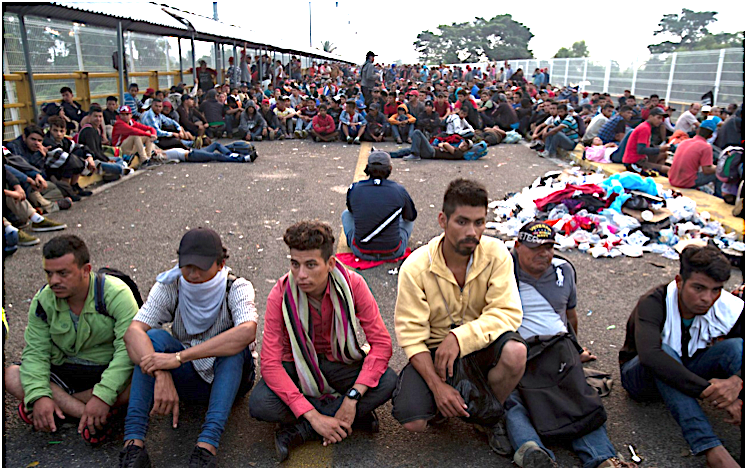CommentsVIEW FROM HERE-In Ramachandra Guha's book, Gandhi: The Years That Changed the World, 1914-1949 (Knopf), he writes, "Activists fighting for the environment, for refugees' and immigrants' rights, and against racial discrimination and violence continue to be inspired by Satyagraha, Gandhi's neologism meaning nonviolent direct action.
The aim of Satyagraha was to arouse the conscience of oppressors and invigorate their victims with a sense of moral agency. Gandhi's unique mode of defiance, the theologian Niebuhr observed as early as 1932, not only works to "rob the opponent of the moral conceit by which he identifies his interests with the peace and order of society." It also purges the victim's resentment of the "egoistic element," producing a purer "vehicle of justice."
As I write this reflection, hundreds of desperate migrants have finally attempted to breach the border along Tijuana and San Diego. Unsurprisingly, given Trump's supercharged anti-immigrant rhetoric and militant stance, they were met with tear gas and driven backwards. It was the first violent incident to take place in this escalating conflict, and it surely will not be the last if things continue to go in the direction they have been.
Here is where I think Gandhi is once again relevant. The tactics of Satyagraha can be used at the border to engender not only tremendous sympathy from the world, they can also force the Trump administration to act from a defensive position rather than the one it has presently taken. If the migrants participate in a massive show of unified self-sacrifice at the border- with the cameras rolling and journalists present- they can force the Trump administration to negotiate. Using Gandhian tactics, their lack of military weaponry becomes irrelevant. Just by engaging in something like a hunger strike, the migrants have the power to generate profound global sympathy and transform the hearts of their most vehement opponents.
Crashing the border and getting hit with tear gas, on the other hand, is a standard reaction. It's what people expect. It's what Americans have been watching on TV for the past decade or so when they try to grasp the refugee crises in the Middle East and Europe. Charging the border also allows the president to snidely remark, "I told you so" to his political detractors. It is a losing proposition all around for the migrants.
Fortunately, it does not have to go down this predictable road. If the migrants are able to collectively organize under the banner of Gandhian nonviolent action, they can turn the tables upside down; they can also achieve everything they hoped to seize from this opportunity. They can put such tremendous moral pressure on the governments of Mexico and the United States, that the two countries will have no choice but to take into consideration every single asylum seeker.
Most importantly, if Gandhian tactics are employed, no one will die from an armed conflict, and the cause of the migrants will be made even more dignified than it was before they set out on foot so many months ago.
Whether the tactic is a mass sit in, a collective act of silence, an art project, a singing marathon, or something I could never dream of, doesn't matter in the least. The main point is it needs to be highly organized, fully committed, and waged in the same spirit that drove Gandhi to successfully confront the British Empire without guns or tanks.
(George Cassidy Payne is an independent writer and adjunct professor of philosophy at the State University of New York (SUNY).) Prepped for CityWatch by Linda Abrams.
















